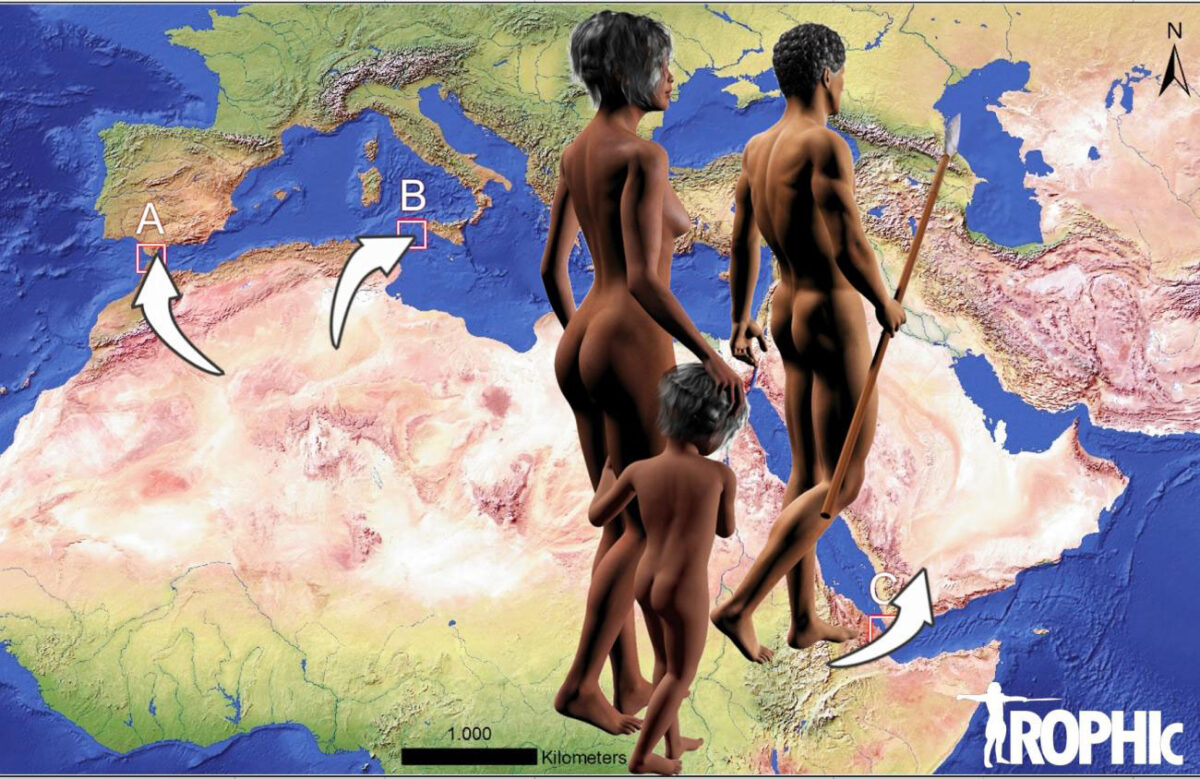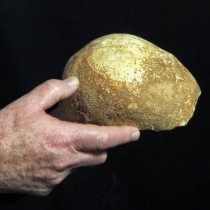Ana Mateos and Jesús Rodríguez, scientists at the Centro Nacional de Investigación sobre la Evolución Humana (CENIEH), are part of an international team that has published a study in the journal PALAEO3 showing that the first Homo sapiens could not have reached Europe over the Gibraltar or Sicily straits, but they might have got to Eurasia by crossing the Bab-al-Mandab Strait.
There exists a long-running scientific debate about the routes taken by the first modern humans to leave Africa. The majority of specialists think they arrived in Europe over a land route through the Levant Corridor. Nevertheless, the idea that they might have entered by crossing the Gibraltar or Sicily straits remains alive in the debate. Another possible entrance route into Eurasia would be over the Red Sea, by crossing the Bab-al-Mandab Strait.
The paper’s authors have used their computational model HomininWaterCrossingABM, which simulates human dispersion over the sea, to analyze the likelihood of crossing a strait using different strategies. The model incorporates reconstructions of the palaeogeography, sea level and currents and water temperature.
The results show that humans could not have crossed the two Mediterranean straits either by passive drifting or active swimming; modern humans could only have done this by raft, but there is no evidence that this technology was within their grasp. On the other hand, the simulations suggest that these humans could have crossed the Bab-al-Mandab Strait by swimming, or even letting the current carry them.
Different climatic scenarios
The effect of the climatic differences between the present day and when the exit from Africa took place, in the Late Pleistocene, was also included in the study. “We ran our simulations in two different climatic scenarios: one representing a warmer period than today and the other a glacial period. These are two extremes enabling us to appraise the effect of the climate on the chances for success in crossing the straits”, explains Rodríguez.
The simulation also takes into account the effect of the principal physiological risks which a human trying to cross a strait face, namely dehydration, hypothermia and exhaustion. “We have seen that in the Mediterranean the greatest risk factors are dehydration and, even more so, hypothermia. However, in the Red Sea, where the water is warmer, these factors exert little influence and death would have taken place from exhaustion”, adds Mateos.
Apart from the CENIEH, the other participants in this paper, whose lead author is Ericson Hölzchen, are scientists from Goethe University in Frankfurt, the Trier Lab for Social Simulation (TRILABS), the German Research Center for Artificial Intelligence (DFKI), the Institute of Geography – University of Cologne and the Institut Teknologi Bandung of Indonesia.





